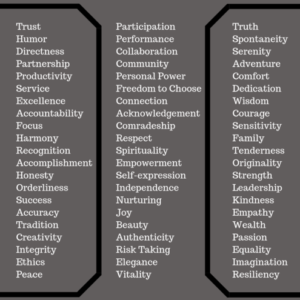Rick Miller published on Forbes.com:
Many people are scared of what AI might mean for the future, and the media is to blame. As story after story churn out for consumption, most offer a common point of view—artificial intelligence (AI) will “take your job.”
Today’s headlines tout the elimination of truck drivers, bank tellers, cashiers, factory workers, and newspaper reporters—just to name a few.
This tired, fear-based approach to attracting eyeballs has been around for a long time. It plays into our fear of loss. Our parents were also scared when they read articles about how the travesty of automations progress would eliminate jobs and cause waves of unemployment. And when was the last time you talked to a switchboard operator, TV repairman, bridge toll taker, film projectionist, or railway station ticket seller?
Yet last I checked, the United States was operating at close to full employment.
The truth is that there is no consensus on whether AI will eliminate more jobs than it will create. But the central question is now, as it has always been, how best can the workforce adapt to unending change and progress, and minimize anxiety about the future?
To date, the answer has been simply, just learn new things.
But perhaps for the first time, it’s no longer enough to simply learn more. We also need to learn differently. In my view, we also need to learn in new ways, learn to integrate what we learn, and learn more about ourselves.
Learn New Things
There’s always been lots to learn. Now there’s even more. From Niklas Goke:
“Back in the 1960s, an engineering degree was outdated within 10 years. Today, most fields have a half-life much less than that, especially new industries. A modern degree might last you just five years before it’s completely irrelevant.”
In 2013, we created as much data as in all of the previous history. That trend now continues, with total information roughly doubling each year. Michael Simmons has crunched the numbers behind our knowledge economy:
“You probably need to devote at least five hours a week to learning just to keep up with your current field—ideally more if you want to get ahead.”
The 5-hour rule is getting lots of traction. And whether you follow that rule or make up your own, it’s up to each of us to invest time to stay current.
Learn In New Ways
With the world’s facts literally at our fingertips, accumulating knowledge is no longer the asset it once was. Instead of knowledge, we must focus on building intelligence.
Yuval Noah Harari’s new book, 21 Lessons for the 21st Century, asserts this:
“In such a world, the last thing a teacher needs to give her pupils is more information. They already have far too much of it. Instead, people need the ability to make sense of information, to tell the difference between what is important and what is unimportant.”
The ability Harari is talking about is the skill of learning, itself. The 2018 lawyer needs knowledge. The 2050 lawyer needs intelligence. Determining what to know at any time will matter more than the hard facts you’ll end up knowing.
As information sources continue to expand and as entire industries rise and fall within a few decades, learning will no longer be a means but must become its own end. We need to expand both what we learn and how we learn. At long last perhaps we will finally start to value the skillsets of teachers and invest more in the science of education.
Learn To Integrate
Harari goes on to describe the importance of the ability to combine many bits of information into a broad picture of the world. He coined the term multipotentialite to guide us toward what he believes is the answer to the prevailing past focus on specialization that must change:
“Idea synthesis, rapid learning, and adaptability: three skills that multipotentialites are very adept at and three skills they might lose if pressured to narrow their focus. As a society, we have a vested interest in encouraging multipotentialites to be themselves. We have a lot of complex, multidimensional problems in the world right now, and we need creative, out-of-the-box thinkers to tackle them.”
The combination of ideas from seemingly disparate categories can yield innovations that disrupt industries and push us forward as a society. We each have an opportunity to think of ourselves as integrators. As we do, we will each be better prepared to fully participate as problem solvers in the future.
Learn About You
With all that’s new in what and how to learn, perhaps one of the most important keys to future happiness and confidence in the age of AI is based in wisdom that’s been around for centuries. The ancient Greek principle “know thyself” may point the way.
It turns out that that specialization is the best approach in the area of self-understanding. Learning about yourself is more important than ever. Know what you stand for. Know your values. Use both as the foundation of relationships and confidence. Developing insight, or self-understanding, by turning your focus inward will allow you to align what you do to who you are. Turns out that the answer isn’t to out-do the machines, it’s to be more human.
I developed a Power Compass than can help you develop insight and confidence that allows you to be a Chief—an insightful human who knows how and what to learn—in a quickly developing technological world, no matter your position or title.
No artificial intelligence can come close to your uniquely human ability. Remember that next time the latest AI headlines grab your attention.
